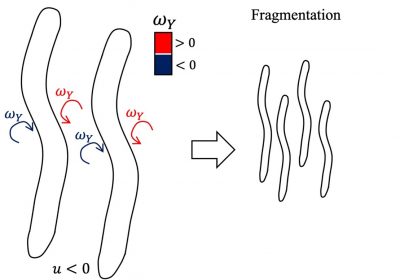The reduction of pollutants in the atmosphere is one of the main goals set by the ACARE Flightpath 2050. To this end, significant efforts are currently being spent by the fluid dynamics community to tackle the problem associated with the friction drag of airborne vehicles.
Friction drag represents one of the most significant shares of drag exerted on aerodynamic bodies, typically contributing to about 50%.
This has stimulated a wealth of control methodologies that can generally be split into two different categories: active or passive. To the former belong those solutions that require energy, generally drawn from the engine bleed or from a dedicated power supply, with the drawback of increasing mass and costs.
One of the most attractive passive methodologies is that of the riblets, which are microgrooves operated on the surface and aligned to the freestream direction. The technique has already been applied to real cases, for example on swimsuits or America’s Cup ships.

Riblets have been widely investigated for the last 30 years. The interest in the topic is far from being abated, considering the potential benefit brought by this passive manipulation. Recent interest of aircraft manufacturers in implementing the technology on existing aircraft has fueled the research to find innovative and even more efficient solutions, with the push towards the definition of more drag reducing geometries, such as sinusoidal ones.


It is then paramount to determine the effect of the riblets’ geometry (such as wavelength amplitude and geometry of the groove) on the drag reduction that they can yield. This will open the path to the implementation of the grooves on small to large scale vehicles, contributing towards the achievement of the goals of mitigating the carbon footprint of air mobility.

Contacts
Prof. Gioacchino Cafiero
Prof. Gaetano Iuso
